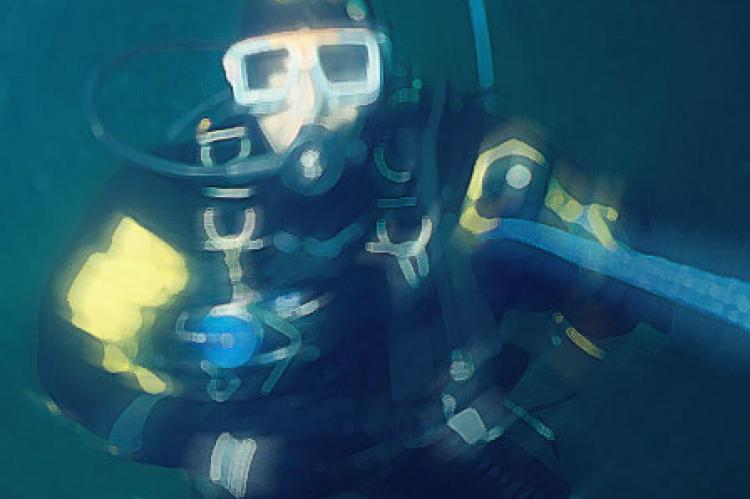Motion sickness drugs gave diver hallucinations
Using scopolamine to counter motion sickness technical divers need to take into consideration that an unusual but reported side effect is "disorientation, anxiety and hallucinations”.
By Michel Tagliati, MD
Being a landlubber, going out on the Baltic usually means that it necessary to take some kind of motion sickness medication.
Most divers have been told that the side-effects of medication will be altered with increased pressure. Most commonly in relation to drugs which will alleviate swollen mucous membranes in the upper airways and problems to equalize, which as all know is contraindicated and relates to risks of reverse block and ruptured tympanic membrane (eardrum). With motion sickness, the use of scopolamine, and anti-cholinergic substance has been on the increase since the introduction of transdermal patches which permitted slow release over a 72-hour period.
Blurred vision
The known side include impaired accommodation (blurred vision) brachycardia1) or reduced salivation and can occur regardless of the mode of distribution. and these need to be considered when diving.
Another aspect which technical divers need to take into consideration is that an unusual but reported side effect of scopalamine is ”disorientation, anxiety and hallucinations”. The occurrence is set to be less than one out of thousand cases, but, needless to say, this wouldn’t be a good experience when trying to read your computer at 70m in 4° C pitch black waters, right?
Scopolamine passes the blood brain barrier, in other words it can exercise its pharmacological effects on receptors in the brain. Personally, I have experienced a level of anxiety, stress and fear and after nearly 20 years of diving along with medical training I realized that there were no sensation or cognitive input that explained these sensations. The dive was fine, the conditions very good, the equipment perfect and the dive went according to plan. Also, after taking off the transdermal patch and diving again under the same conditions as the first dive there was a remarkable difference in awareness, calm and cognitive abilities. However these observations must be considered a case-report only and not full fledge scientific investigation to be reproduced. In general very little research has been done, it has been pre-clinical and in laboratory environment only. No case reports has been published.
Lack of mental sedation
Yet more alarming is the combination of trimix gases and the lack of mental sedation which nitrogen otherwise brings (which we of course do not want).
Personally, as a physician and starting out as a technical, closed circuit rebreather diver with the aim of taking pictures of General von Steuben (see X-Ray #8 , p 81-87), I found, after comparing my experiences with my dive buddy back on the surface that I have had visual hallucinations and that my video footage from several dives was out of focus - I though that my mask was fogging up on me as it might have done on previous thousands of dives I have done.
Lesson learned
Scopolamine transdermal patches and trimix diving is not an acceptable combination. Not everyone will hallucinate, but the compromise if you have to travel great distances at sea to get to your destination is to put these patches on 4-6 hours before your trip starts and remove them 12 hours prior to your dive. Preferably, don’t use these drugs at all in conjunction with diving. Stick to the newer types of anti-histamine drugs but do consult your own doctor.
It is quite possible that pressures above 5 bar while breathing trimix gases increased serum concentration resulting in a higher frequency of unwanted side effects. Better be safe than sorry. There are enough task loading with CCR, trimix, cold water deep diving and video camera work without having to deal with medication problems.


